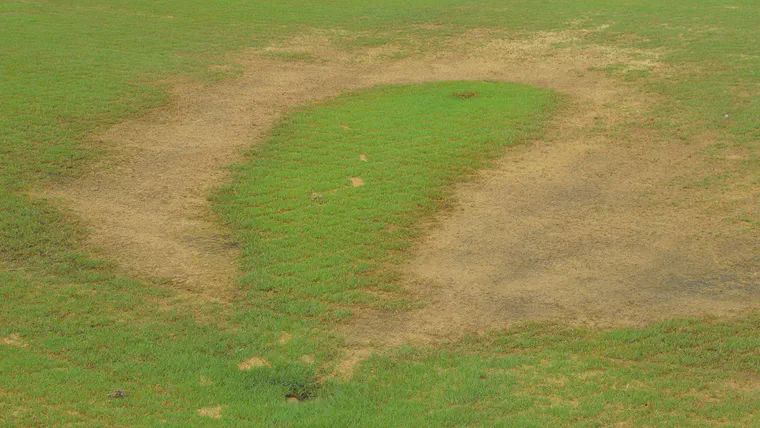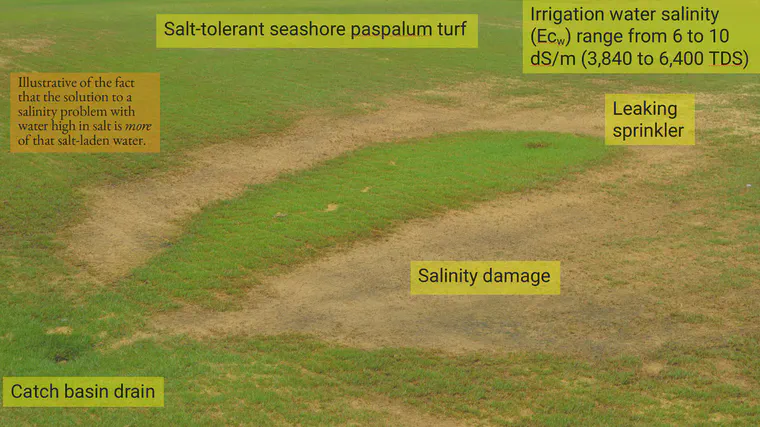The solution to an irrigation water salinity problem is more of that same water
This photo illustrates two things about salinity problems. First, the salinity stress is most evident in the low areas, because the salts drain with the water. Second—and this one can be counterintuitive at first—the solution to an irrigation water salinity problem is to add even more1 of that “bad” water as irrigation.

The irrigation water used at this site ranges from 6 dS/m during the rainy season to a more concentrated 10 dS/m during the dry season. Seashore paspalum turf—most warm-season turf species, actually2—can tolerate this amount of salt, so long as a sufficient amount of water is applied. That is evident in this case too. The high areas are fine because the salt has moved away. And the lowest area is fine, because it got extra water from the malfunctioning sprinkler, too. But the areas where the grass died did not get enough water, and the salt accumulated to toxic levels.

I calculated a leaching requirement of 0.2 for this situation, using the dry season ECw of 10 dS/m and a soil ECe of 12 dS/m for seashore paspalum. The water requirement is thus 125% of the evapotranspiration (ET). See the footnote for a link to the equations.
The equations for the two step process of calculating a water requirement are shown here. One first calculates what is called the leaching requirement (LR) based on the irrigation water salinity and on the soil salinity tolerance of the grass species being grown. The irrigation water requirement uses the evapotranspiration and the previously calculated LR to determine the amount of water to apply as irrigation. ↩︎
Certainly seashore paspalum, zoysiagrasses, and bermudagrasses (Cynodon), can tolerate this level of salt in the irrigation water provided there is enough of that water and that there is a good drainage system. ↩︎